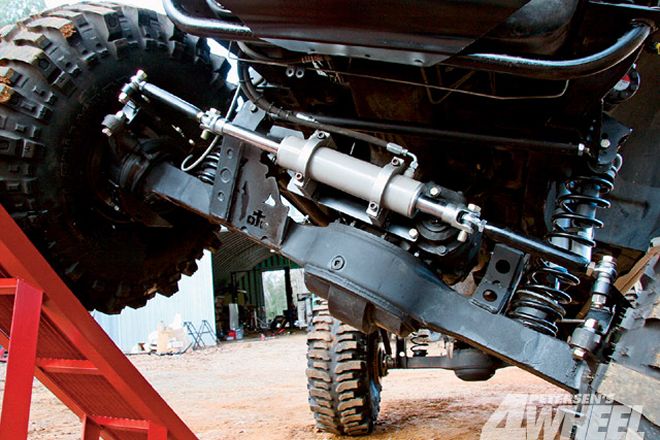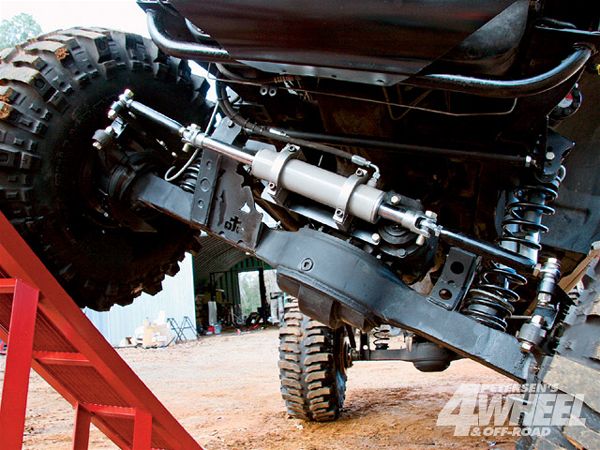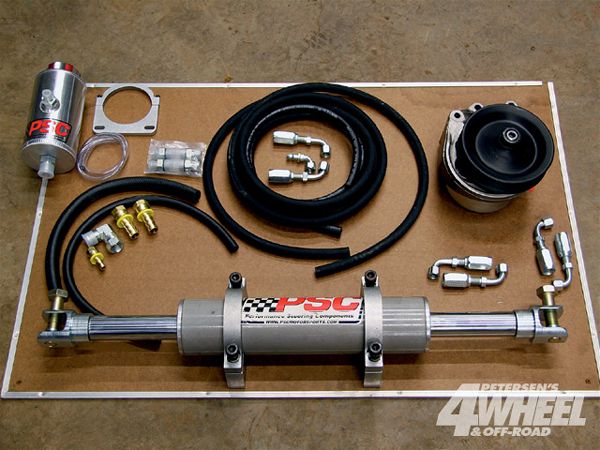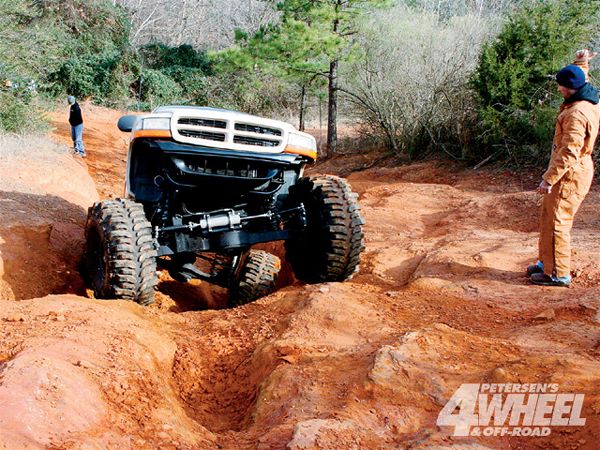
 Ali Mansour
Brand Manager, 4WD & Sport Utility
Ali Mansour
Brand Manager, 4WD & Sport Utility

If you've been following our Heavy Metal Mudder project vehicle (Apr. and May '09), then you will recall that last month we unveiled our plans for running a fully hydraulic steering system. Using a double-ended cylinder from PSC Motorsports, we eliminated the traditional steering gearbox, opting for hoses over hardware.
The reasons were simple: It's tough enough to steer our massive tires off road, the system is relatively easy to assembly, and it can be dialed in so the rig can be run safely at speed. "At speed" is our way of saying that this is a non-DOT-approved steering setup. However, much like our beadlock wheels, we feel that if set up properly, it can be an intelligent alternative to a traditional steering configuration.
 A variety of full hydraulic steering kits are available in the aftermarket. Before purchasing the first part, talk with one of the steering techs from the place where you will be getting your system. Be sure to put together a list of specifics, such as the vehicle's weight, engine, scrub radius, wheel offset, and intended use. These are just a few of the items that will help you determine what setup is right for your rig.
A variety of full hydraulic steering kits are available in the aftermarket. Before purchasing the first part, talk with one of the steering techs from the place where you will be getting your system. Be sure to put together a list of specifics, such as the vehicle's weight, engine, scrub radius, wheel offset, and intended use. These are just a few of the items that will help you determine what setup is right for your rig.
Hydraulic steering systems generally consist of four vital components: cylinder, orbital hydraulic steering control, fluid reservoir, and pump. Acting as a steering gearbox, an orbital uses power-steering fluid to control a cylinder, or ram as it's commonly called. Connecting directly to your vehicle's steering shaft, most orbitals are referred to by the number of wheel locks (turns of the wheel in either direction) they offer. The fewer the turns lock to lock, the more sensitive the steering. Working in conjunction with a beltdriven mechanical pump, the most common type of hydraulic steering system is known as an open-flow system.
Choosing the right orbital, pump, and cylinder for your application doesn't require an engineering degree, but there are a number of variables to consider. Compiled here are a few of the key ideas and components you will need to address when converting your rig to full hydro. Please view this as a general guide, as differences in orbitals, cylinders, and pumps may be great from rig to rig. Your best bet when setting up a full hydraulic steering system is to always consult whomever you decide to get your parts from. Since we opted on a PSC Motorsports kit, we used PSC's years of experience and expert advice to help dial in the best system for our massive Rockwelled rig.

Fluid Thinking
Full hydraulic steering is far from perfect and isn't for everybody. Almost any modification you perform on your rig has a flip side. Whatever you bolt, weld, or drill on can have a side effect. One common mistake many people make when running full hydraulic steering is trying to overcorrect too quickly by forcing the steering wheel aggressively in one direction or the other. If you try to jam the wheel too quickly, it will interrupt the pump flow, which can only fill and empty so fast.
Steering with a fully hydraulic system can feel almost effortless at times, which can make you forget that you're still moving a heavy load. Like we said before, it's not perfect, but it is a simple and really easy solution for those of you with rigs where traditional steering simply isn't an option.





